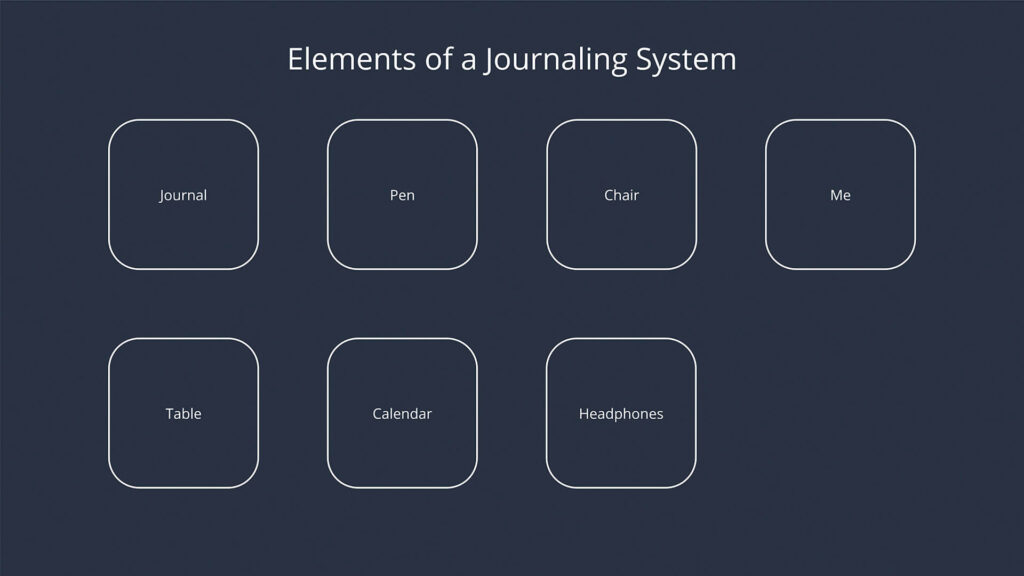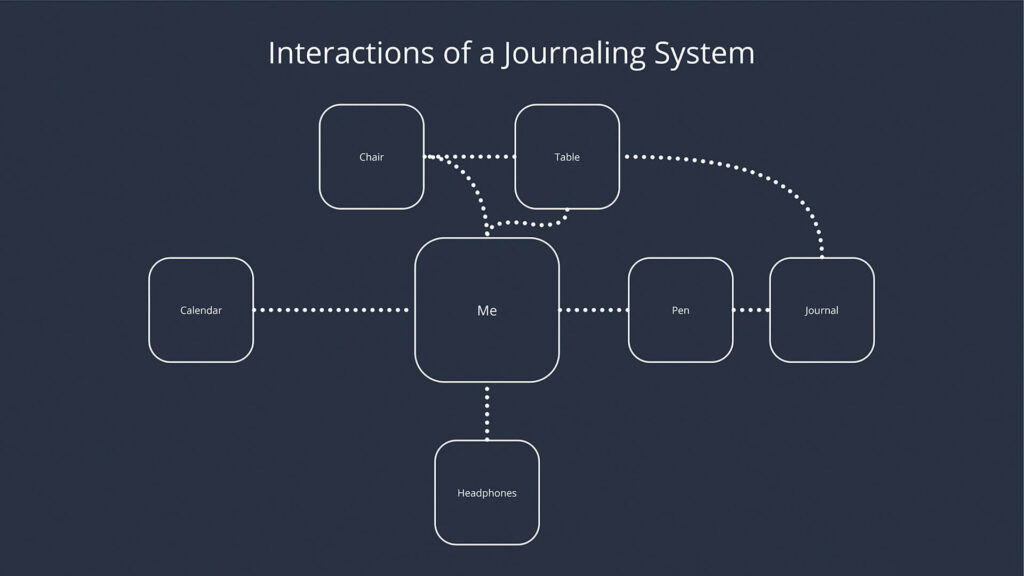Does the word “system” make your creative instincts want to run and hide?
Many creatives I’ve taught initially resist building “systems” to support their work, believing them to be complex, rigid, and creativity killers.
This belief couldn’t be more wrong.
The reality is you’re already using powerful systems—without realizing it.
Systems shape every aspect of our creative lives, from how we capture ideas to how we turn those ideas into finished work. When we recognize these systems, we gain the power to design them intentionally.
Instead of being carried along by arbitrary or reactive processes, we can create systems that amplify our creativity, boost our productivity, and help us maintain a sense of clarity even during challenging times.
It starts with recognizing the systems already around us, then experimenting with intentional changes to make them more meaningful.
Understanding the Building Blocks of Systems
A system is simply a set of interconnected elements organized for a purpose.1
Your journal rests on the desk by the window, where natural light and a favorite pen make writing feel inviting.
Your running shoes sit by the door next to a bowl with your keys, making it easy to transition from journaling to your morning walk.
These aren’t random choices—each element is positioned to guide you toward starting the day in a way that gets you moving and building momentum.
Every system—whether it’s your creative process, your project workflow, or your morning routine—consists of three essential parts: elements, connections, and purpose.
Elements: The Visible Parts
Elements are the tangible parts of a system (like a sketchbook or pen) and the intangible resources you rely on (like time, motivation and mental energy). Think of these as the basic building blocks you can clearly name.
Interconnections: How Elements Work Together
Interconnections are the relationships between elements—how they influence each other. Your pen marks the paper; your eyes and brain process those marks, influencing how your hand moves next.
Purpose: What the System Achieves
Purpose is what the system accomplishes as a whole. While individual elements have specific functions (a pen writes, a desk provides space), the system’s purpose might be broader. The purpose of your drawing system might be maintaining creative momentum, turning ideas into finished work, or balancing creative exploration with productive output.
Understanding these three parts allows you to design each with intention and then test them to see if they are working or need improvement.
The Hidden Systems in Your Creative Life
Your creative practice is full of systems even if you don’t recognize them.
When you finish a successful project, you’ve likely used a system to:
- Collect and retain inspiration and ideas.
- Organize and prioritize those ideas so that you can focus on exploring them.
- Execute an idea based on your chosen focus and work system.
- Share that work with the world.
Each of these represents a purpose for various interconnected elements that you have either intentionally designed or allowed to develop organically.
The key is to recognize and understand your systems so they evolve with intention, not by default—avoiding inefficiencies and creative roadblocks.
How to Map Your Creative Systems
The best way to recognize the systems that affect your day is by observing and mapping them.
- Start with articulating the purpose of the system.
- Identify the elements within the system.
- Observe how the elements interact with one another.
- Ask whether the system is functioning in a way that aligns with its purpose.
If the system is not working well, then start exploring ways to bring it into better alignment with its purpose.
Let’s use a simple real-world example to practice.
Map Your Journaling System
Journaling is an accessible and powerful way to process experience while practicing ways to prioritize productive behavior. There are an abundance of systems designed to facilitate a consistent journaling practice (daily pages, bullet journal, daily intention, etc.).
Instead of arbitrarily picking someone else’s system and hoping it’s a good fit for us, let’s map out a personalized system that will be designed based on our specific intentions and circumstances.
Start with Articulating the Purpose
This is entirely up to you. Ask yourself, “Why do I want to journal?” What will it accomplish? There will more than likely be multiple purposes, but just pick one that seems to resonate for now. There is no wrong answer.
For example, one reason I journal is meditative. I like to start and end my day with a bit of reflection and intention through free writing. It helps me focus and also creates a ritual at the end of the day to shift from work mode to non-work mode.
Identify the Elements of the System

Don’t worry about identifying every single minute element. Focus on the main ones that matter most. Elements can have an infinite number of sub-elements, so practice focusing on the ones that really affect the overall system.
Here are the primary elements in my current journaling system:
- A Journal/Sketchbook
- A pen
- A Kitchen Table with good light
- A comfortable chair
- My digital calendar where I’ve marked off 30 minutes in the morning and 30 minutes in the evening specifically for journaling.
- My headphones connected to my favorite playlist.
- Me! This will be obvious, but often it’s worth including your physical self in the map of the system.
Observe How the Elements Interact with One Another

- The chair interacts with my body
- The calendar acts as a catalyst to start the process
- The light affects the entire system
- The pen acts as a bridge between me and the journal
- The journal acts as a bridge between my past self and present self
Ask Whether the System Is Functioning in a Way That Aligns with Its Purpose
This is where you get to experiment by testing the system and evaluating whether it needs adjusting.
In my example I would ask, “Was the act of journaling using my system meditative?”
If not, adjust the elements or interconnections within the system to improve it.
- If my playlist is full of industrial techno music, which gets me amped instead of meditative, I’ll want to explore a different playlist.
- If the lamp next to the kitchen table doesn’t provide enough light, I’ll want to try a brighter bulb.
- If the kitchen table is being used by an eight-year-old playing Monopoly with his older brother, then I’ll want to adjust the space I’m working in.
The Amazing Bonus of Mapping Your Own Systems
Remember that abundance of journaling systems mentioned above?
Map them out and experiment with extracting the elements you notice and then integrating them into your personalized system.
Does your favorite productivity guru have a prompt that sparks new thinking? Appropriate it and use it in your personalized system.
You do not need to start every system from scratch or use others’ systems in their entirety.
Take what works for you from one system and use it in your own.
The Art of Intentional Systems
Systems aren’t the enemy of creativity; they’re its hidden framework. By understanding and intentionally designing the systems that support your work, you can create with more clarity, confidence, and consistency. It’s not about perfection—it’s about progress, growth, and the freedom to adapt as your creative journey unfolds.
So, take a look around your creative practice. What systems are already in place, and how might you design them to better serve you?
References and Additional Resources
- Meadows, D. H. (2015). Thinking in Systems. Chelsea Green Publishing. ↩︎
